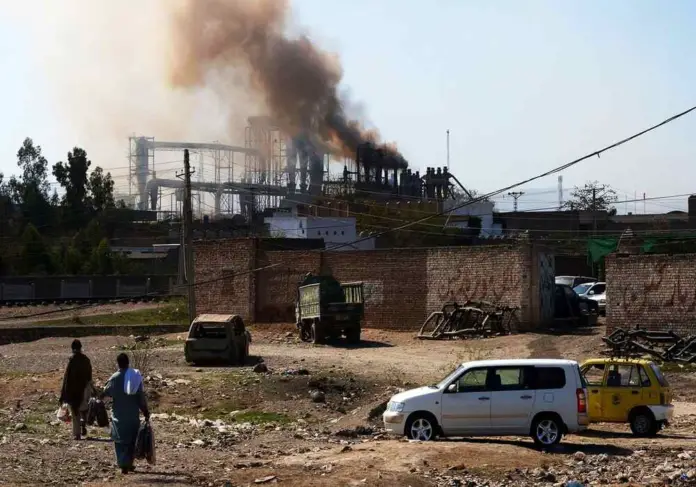There are a number of challenges to our environment and the tobacco industry is counted among the factors that are contributing to the degradation of our living conditions. One of the negative effects which start at the early stage of the production of cigarettes is deforestation, and Pakistan is one of the victims of this ill-effect.
Pakistan stands among the top four countries where there has been a rising use of tobacco. An estimated 40 percent of men and nine percent of women in the country are smokers, and the number is increasing day by day. According to the Pakistan Tobacco Board, there are 35,000 barns in the country for roasting/curing tobacco. Each barn consumes 1,000 kilograms of firewood in one roasting cycle of 8-10 days for flue-curing, and each barn runs an average of 8-10 cycles per year.
Hence, out of 12 million tons of firewood annually produced in Pakistan, 2.8 million tons, or 20 per cent is exhausted in tobacco barns, leading to massive deforestation and environmental pollution. Forest resources are also used for packing tobacco including tobacco leaves and cigarettes, while tobacco smoke contains over 60 known cancer-causing chemicals. Besides causing lung cancer and other fatal diseases, smoking harms nearly every organ in the body. So, tobacco use is not only a health hazard but also poses a threat to our environment.
One of the key factors to ensuring healthy living conditions for human beings is the sustainability of the environment and tackling challenges that pose a threat to the world environment. The goal of environmental sustainability is to conserve natural resources and to develop alternate sources of power while reducing pollution and harm to the environment. Environment sustainability can be defined as a state in which the demands placed on the environment can be met without reducing its capacity to allow all people to live well, now and in the future. Environmental sustainability is the context within which social and economic life happens. Also, social inequity directly affects environmental viability.
The main factors that are making a direct impact on the sustainability of the environment include climate change due to industrial growth, unplanned urbanisation, deforestation, and pollution. Amid growing evidence that climate change is having wide-ranging global impacts that will worsen in the years ahead, different countries are planning to tackle the challenge. With the passage of time, forested areas are shrinking rapidly across the world. The international criterion requires that 33 percent of a country’s total area should be covered with forests for a sustainable environment whereas Pakistan’s forested area is less than five percent, which is a cause for concern.
Moreover, the depletion of trees is also affecting the temperature of different cities and causing serious health issues that might aggravate if not controlled through the protection of the environment. In order to preserve the environment and recover forest cover, planting trees should receive due emphasis, and more and more trees should be planted.
Last but not least is the grave issue of pollution. The World Health Organisation (WHO) has already cautioned the world against the health hazards of pollution. According to WHO reports, pollution is responsible for one in four deaths among all children under five. The leading causes of death are toxic air, unsafe water, and lack of sanitation. The reports found polluted environments cause the deaths of 1.7 million children every year, but many of the deaths could be prevented by interventions already known to work, such as providing cleaner cooking fuels to prevent indoor air pollution.
Leading thinkers suggest that to stand any chance of achieving environmental sustainability, serious efforts need to be taken right now. Like Pakistan, other countries around the equator are also at risk of experiencing dangerous weather patterns due to a persistent rise in mercury. Climate change is drastically and rapidly altering ecosystems, agriculture and weather fluctuations all over the world. The life cycles of most plants and animals are critically tied to seasonal changes in temperature, precipitation, and light. These changes are directly making an impact on human life in affected regions of the world. The better way is to take some pre-emptive steps to at least delay such effects.
Unfortunately, Pakistan can be bracketed as the country most oblivious to the effects of climate change. While other countries are adapting to climate change and abiding by climate conventions, Pakistan has largely neglected this pressing issue so far. We need to decrease our dependence on fossil fuels and find sustainable solutions like increasing the capacity and number of hydroelectric power plants, building more nuclear power plants and relying on renewable resources to solve our energy crisis.
By increasing the forest cover and building water reservoirs, the government can play a role in the sustainability of the environment. One of the most pervasive forms of pollution in the country is the growing number of cars on the roads, most without catalytic converters. The best way to reduce motor vehicle pollution is by setting up safe and efficient public transport networks. Hopefully, Pakistan will launch environmental initiatives and implement regulations for its sustainability.







